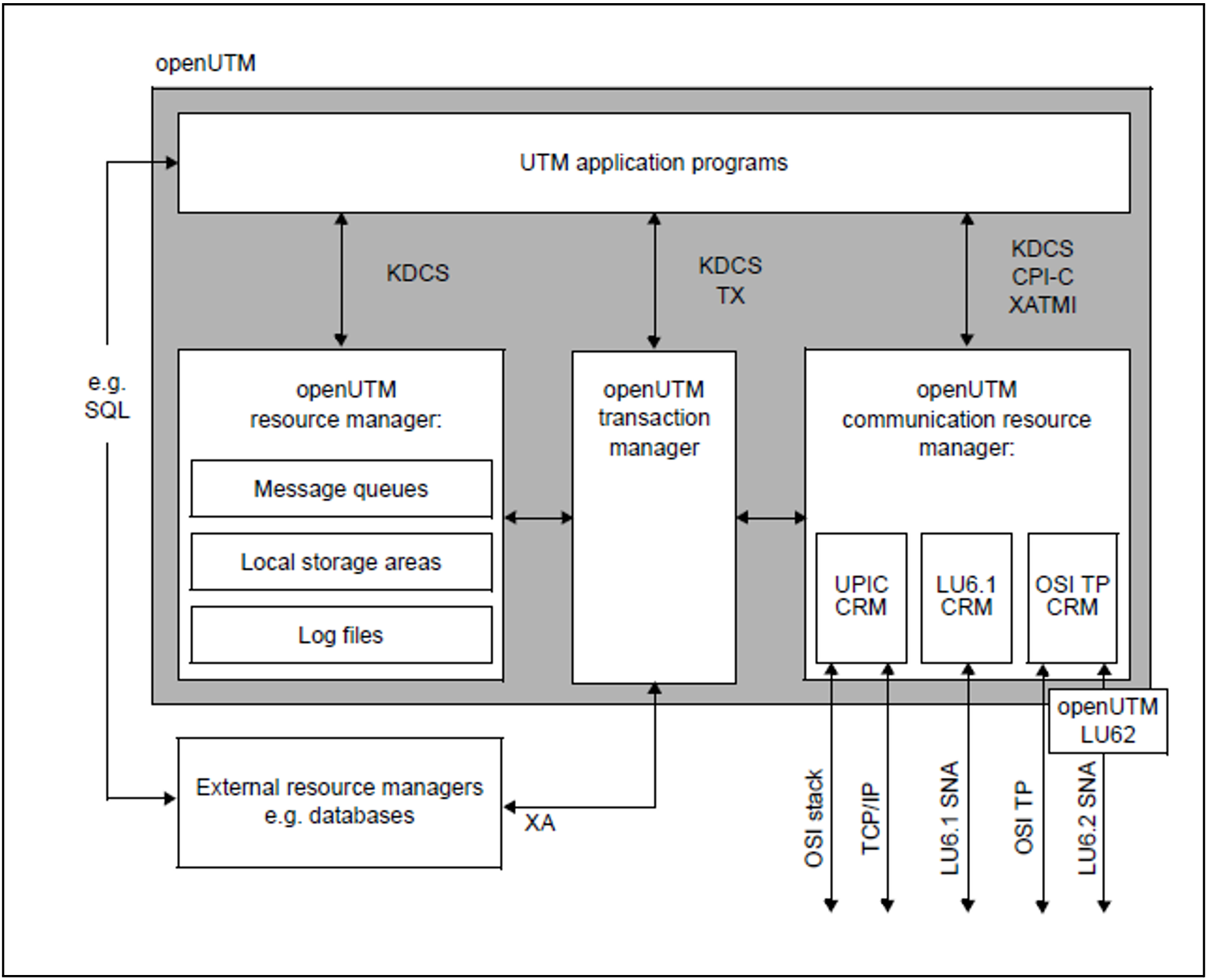The openness of openUTM is also reflected in its conformance with X/Open:
openUTM complies with the reference model for Distributed Transaction Processing (DTP) defined by X/Open, and supports the interfaces standardized by X/Open.
Figure 7: Architecture of openUTM as defined in the X/Open model
X/Open differentiates between four component types in transaction-oriented systems: application programs, transaction managers (TMs), resource managers (RMs), and communication resource managers (CRMs).
Application programs:
Application programs implement the processes to be performed, and access the services of the other components via standardized program interfaces.In addition to the CPI-C, XATMI, and TX program interfaces standardized by X/Open, openUTM supports the universal KDCS interface (German standard).
Transaction managers (TMs):
Transaction managers are responsible for controlling and monitoring transactions, and provide recovery functions. They coordinate access to data and communication resources. In the case of external resource managers, e.g. database systems, this takes place via the XA interface.Resource managers (RMs):
Resource managers manage data resources. An example of an RM is a database system. openUTM also provides its own resource managers, e.g. for accessing message queues, local storage areas, and log files. Application programs access the RMs via RM-specific interfaces, usually SQL for database systems and the KDCS interface for openUTM RMs.Communication resource managers (CRMs):
Communication resource managers control communication between the application programs in distributed systems.
openUTM provides CRMs for the international OSI TP standard, the LU6.1 and LU6.2 industry standards, and the openUTM-specific protocol UPIC (see also section"openUTM - open for different platforms and protocols" and sections "Communication with UTM-Client applications" through "Overview: partners, protocols, transaction management"). In openUTM, the OSI TP connection is implemented via the XAP-TP System Programming Interface standardized by X/Open.
The applications programmer can access the communication options of the CRMs via the CPI-C, XATMI or KDCS program interfaces.
The appendix includes a list of all standards supported by openUTM. |
Advantages of X/Open conformance
The X/Open conformance of openUTM offers a range of advantages:
option of porting application programs through standardized program interfaces (e.g. CPIC)
option of integrating heterogeneous distributed systems through standardized communication protocols (e.g. OSI TP)
option of replacing components, e.g. RMs, through standardized integration interfaces (e.g. XA)
Since openUTM can also be used on all conventional hardware platforms and has excellent connectivity properties (see section "openUTM - open for different platforms and protocols"), you can distribute your application in a heterogeneous environment in accordance with the procedures used in your company. Existing application program units - even those under other transaction monitors - can be integrated without any problems, thereby protecting your investment.
The openUTM transaction monitor thus provides you with all the options required to define an application architecture appropriate for your business procedures in a heterogeneous IT environment, and to implement this architecture with the help of suitable interfaces.

